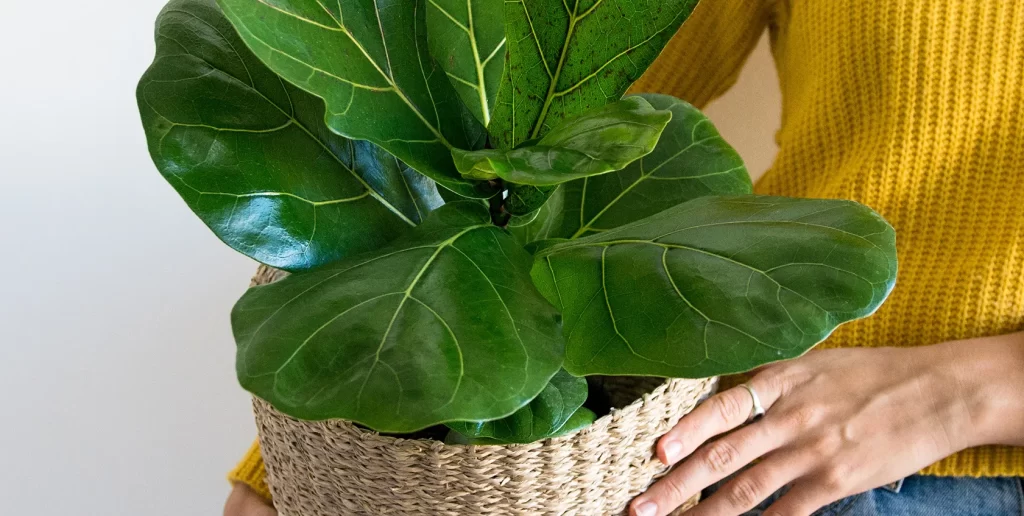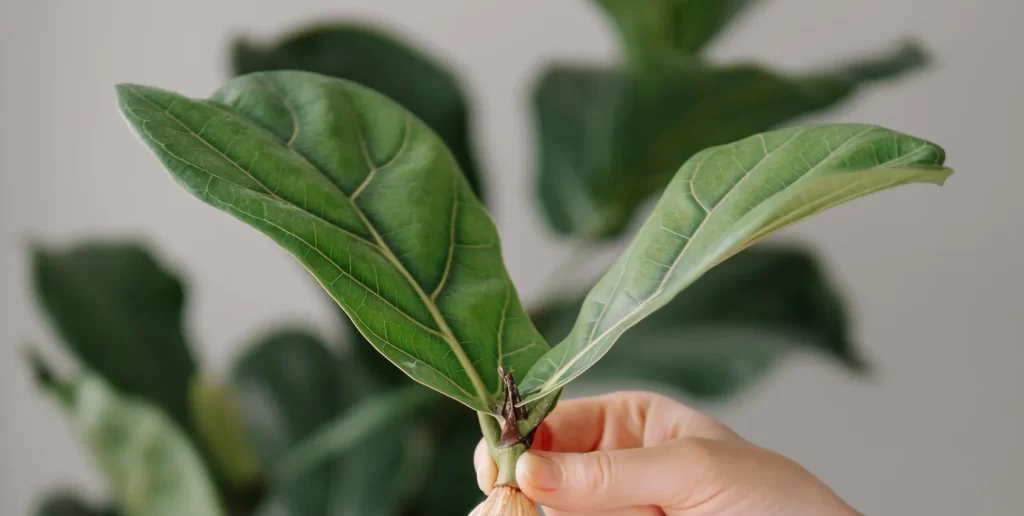Because it is one of the most popular plants, the Ficus pandurata is trending. In addition to its pleasing aesthetics, this plant fits in very easily with its environment, so it can be used to both to beautify your house and to bring life to the office. The pandurata is native to Africa, where you can find specimens that are 20 m tall. But don’t worry: in the home, the maximum height is about 2 meters. Of course, its large dark green leaves reach approximately 25 cm in length in indoor pots, one of its most beautiful attractions.
Other names for the Ficus pandurata are Ficus lyrata, Ficus lira, Ficus llira, lyre tree, Ficus lirado, fiddle-leaf fig, and others. All these names allude to its beautiful lyre-shaped leaves. Its scientific name is Ficus lyrata Warb, its synonym is Ficus pandurata Hort. Sander and belongs to the Moraceae family.
The Ficus pandurata is an evergreen tree (this means that it always has leaves) that can live both outdoors and indoors, but in an effort to find plants that help make our house look full of life, it is now much more commonly seen as an indoor plant. Keep in mind that it does not usually flower when grown in a pot or indoors, and when it does, it is slow growing. The good news is that the pandurata is not delicate at all, so its care is not so demanding. We are going to cover some of the basic requirements for this Ficus to grow healthy. Remember, taking care of them is the key to keeping them beautiful.
Placement
Don’t place the pot it in drafty areas and keep it away from the heat, as the pandurata doesn’t tolerate low humidity environments.
Light
It likes light very much and requires a bright environment. But be careful, as it shouldn’t be directly exposed to the sun.
Watering
You must water it frequently in the summer when it is hotter, but in the winter once a week is enough. Use room temperature water—never cold, as it doesn’t tolerate low temperatures at all. We recommend collecting rainwater so that you can use it to water your Ficus. Lack or excess of humidity causes its leaves to fall or turn yellow.

Substrate
The substrate must be light, rich in organic matter, and always well-drained. This type of substrate is readily available at nurseries and is a mixture of peat, sphagnum moss, pine needles, river undercurrent, and perlite as a general base. We recommend adding worm humus.
Cleaning
There are different methods of cleaning pandurata leaves. Here are some of the most common:
- Put the pandurata in a bathtub or on a patio (depends on the size) to wash dirt off the leaves with a pressure hose. Make sure the pressure is not too much so as not to break them!
- Use a slightly damp cloth and gently wipe the leaves. Rinse the cloth in a bucket as it gets dirty.
- Use polishes made with substances that are harmless to the plant. If you want to avoid purchasing anything, use banana peels or orange juice.
Pests
If you want to reproduce your plant at home, you can do it with cuttings.

Pests
Some of the usual pests for this plant are the red spider mite and the mealybug, both of which can be combated using a garlic water solution.
Leaf fall
A very common problem is that the leaves of the pandurata fall due to lack of water. Always check that the substrate in the pot is kept moist. If its leaves continue to drop, check that the plant is not in a drafty space or if it is receiving little light. If necessary, relocate the plant.
If the leaves have a yellowish tone accompanied by small cobwebs on the underside, it means that the plant has been overwatered or has a red spider mite infestation.
Outside
f your pandurata grows considerably and no longer looks good in its original spot, it’s time to move it outside. You can start by placing it in semi-shade and later if you want in full sun. It can now be treated as a proper tree.
The land must have good depth of soil, with good drainage if possible. Take care that the earth has volcanic gravel, silica sand, and organic matter.
To transplant it into the ground, make a hole twice the size of the pot in which it is planted. Carefully remove the pandurata, insert it into the hole, and fill with the improved soil you prepared. Then lightly press the soil so that the plant is firm. Water it abundantly the first time, and then only when necessary.
With these tips, your Ficus pandurata will grow spectacularly, and if you want to add variety to your indoor plants, another very resistant option is the pothos plant, which needs basic care to keep it looking spectacular.





